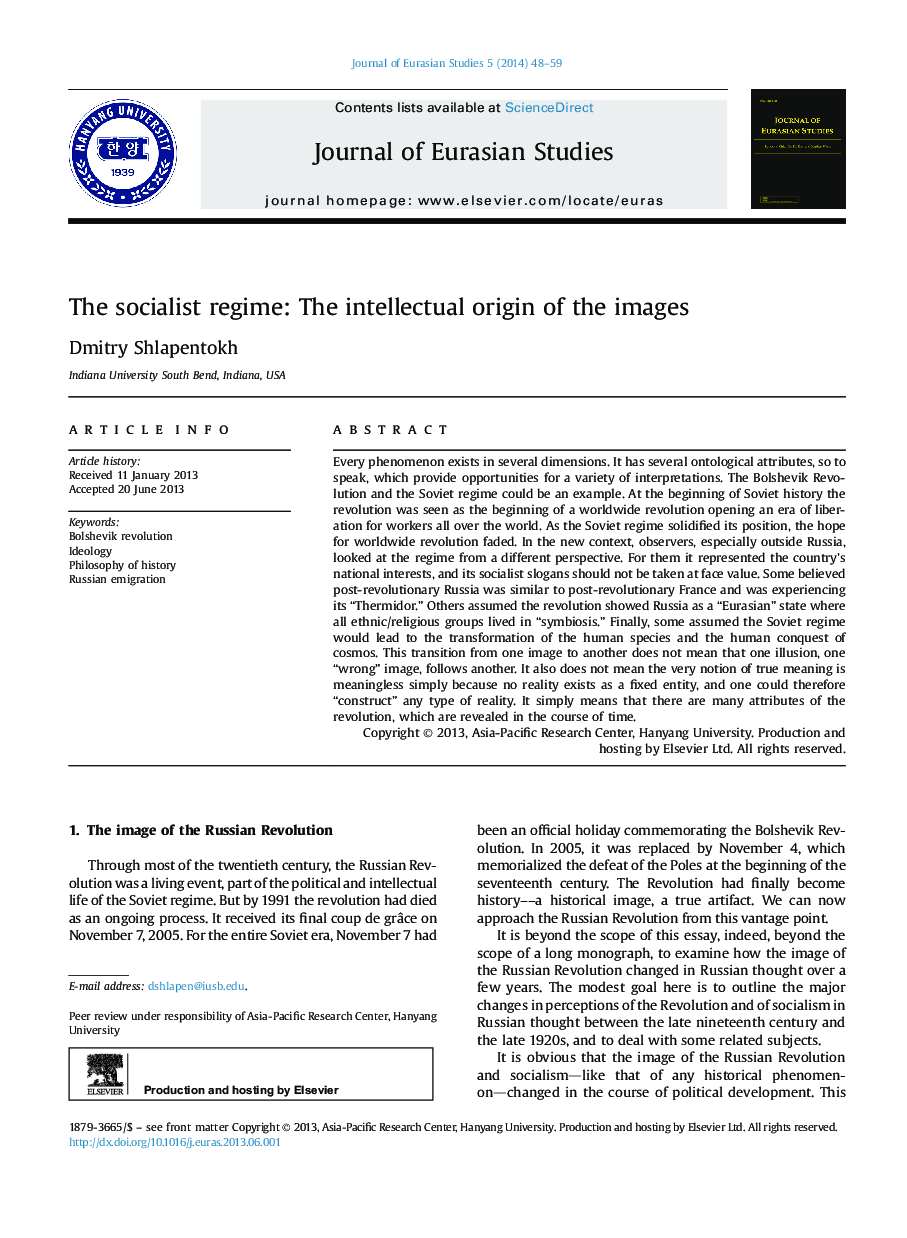| Article ID | Journal | Published Year | Pages | File Type |
|---|---|---|---|---|
| 1127219 | Journal of Eurasian Studies | 2014 | 12 Pages |
Every phenomenon exists in several dimensions. It has several ontological attributes, so to speak, which provide opportunities for a variety of interpretations. The Bolshevik Revolution and the Soviet regime could be an example. At the beginning of Soviet history the revolution was seen as the beginning of a worldwide revolution opening an era of liberation for workers all over the world. As the Soviet regime solidified its position, the hope for worldwide revolution faded. In the new context, observers, especially outside Russia, looked at the regime from a different perspective. For them it represented the country's national interests, and its socialist slogans should not be taken at face value. Some believed post-revolutionary Russia was similar to post-revolutionary France and was experiencing its “Thermidor.” Others assumed the revolution showed Russia as a “Eurasian” state where all ethnic/religious groups lived in “symbiosis.” Finally, some assumed the Soviet regime would lead to the transformation of the human species and the human conquest of cosmos. This transition from one image to another does not mean that one illusion, one “wrong” image, follows another. It also does not mean the very notion of true meaning is meaningless simply because no reality exists as a fixed entity, and one could therefore “construct” any type of reality. It simply means that there are many attributes of the revolution, which are revealed in the course of time.
